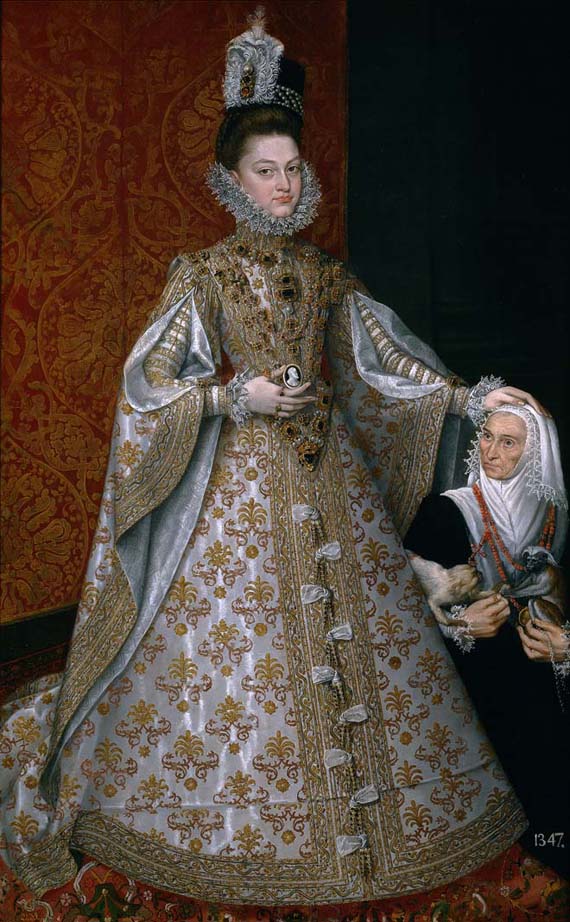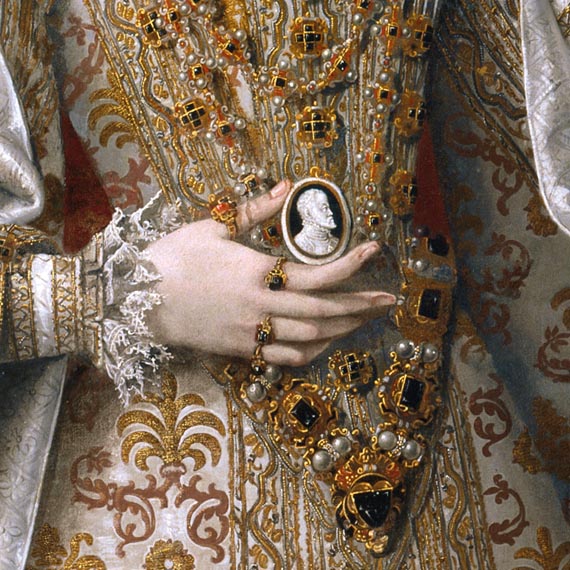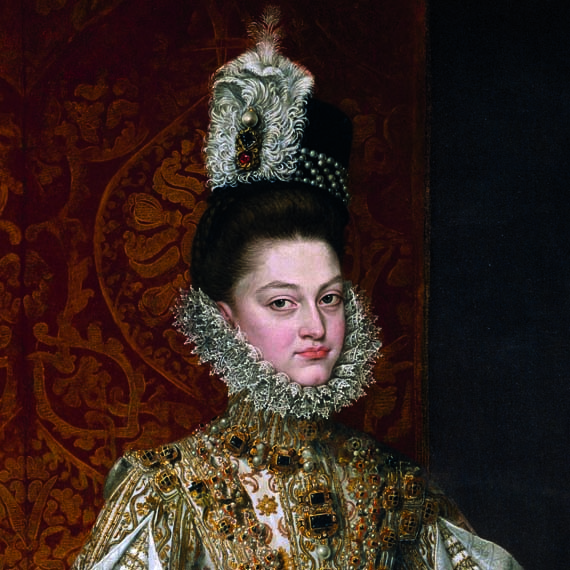

Infanta Isabella Clara Eugenia (1566–1633), Philip II’s elder daughter and one of the most important women in the Spanish dynasty can be seen here dressed in her stiff bodice dripping with jewels from her mother and her stepmother. She wears a formal dress made of white silk, heavily embroidered with gold thread; the high collar with its delicate lace trim and the feathered headdress each correspond to Spanish fashion in the mid to late 1580s.
Isabella Clara Eugenia represents the wealth of the Spanish Court, which by the mid 16th Century, enriched by the New World and its gold and emeralds, was leading Europe into its last great epoch of formal ostentatious display in which the art of jewellery played such an important role.
There are three important aspects to the context of this painting: the artistic and intellectual revolutions of the Renaissance; the techniques of rendering a more natural reality applied as much to jewellery as other art forms; and, a time of discovery on a global scale.
Christopher Columbus reached America in 1492, then Vasco de Gama sailed around the Cape of Good Hope in 1497 to new lands and new riches. In the 1500’s the centuries old conduit for precious goods travelling from the east to the west — The Silk Road — was overthrown by these new sea routes to the gem rich countries of Ceylon, Burma and India, shifting the centres of trade in luxury goods from Venice to Seville and Lisbon.




There was enormous potential for jewellery with the new materials and new styles — but equally significant was the recent development of the printing press — this really was an information revolution enabling designs to be distributed throughout the goldsmiths workshops of Europe.
Isabella Clara Eugenia uses her jewellery — in no subtle way — to display power and status — the sumptuous necklaces inherited from her mothers family re-enforce her matrilineal power base, while the hard stone cameo she holds in her right hand is a portrait of her father Philip II — presents the viewer with a strong sense of dynastic continuity.
Barbara Heath is a Brisbane-based jewellery designer
You can read more about The infanta Isabella Clara Eugenia by Leticia Ruiz Gómez in the richly illustrated exhibition catalogue Portrait of Spain: Masterpieces from the Prado.
Know Brisbane through the Collection / Read more about the Australian Collection / Subscribe to QAGOMA YouTube to go behind-the-scenes
Specially curated for the Queensland Art Gallery by the Museo Nacional del Prado, Madrid, ‘Portrait of Spain: Masterpieces from the Prado’ is the largest and most significant international loan the Prado has ever undertaken, and the first exhibition from their collection to be shown in the Southern Hemisphere / Queensland Art Gallery / 21 July – 4 November 2012
#QAGOMA


Thanks for uploading and commenting on this very interesting picture. I am guessing, of course, but suggest that there may be some added significance in the apparent blessing by the Infanta of the elderly woman on her left. Royal blood was considered to have magical healing properties and touching for health or blessing underlines the divine aspect of kingship. The elderly woman has lace edged clothing and is likely to be noble. She may even be a nun. Her status if she is a dedicated religious is markedly lower than that of the infanta.